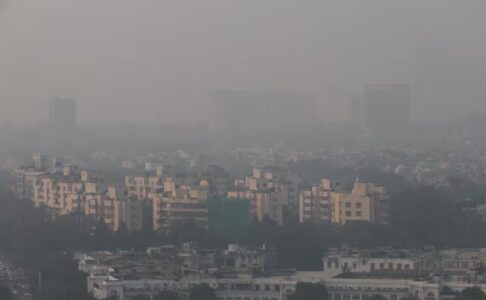Azerbaijan has announced the agreement of a new green building roadmap. The collaboration with the International Finance Corporation is expected to outline practical and actionable strategies for adopting green building standards, energy efficient infrastructure and the use of environmentally responsible materials in the country.
Anar Guliyev, chairman of the State Committee on Urban Planning and Architecture of Azerbaijan, told a high-level round-table at Cop29 that the roadmap “represents a critical step in integrating sustainability into our urban development process”.
Making urban spaces more green was in the spotlight at Cop29 on Wednesday, as delegates heard that the built environment sector contributes nearly 40 per cent to global energy-related annual green house gas emissions.
Ministers, local leaders, development banks and key stakeholders gathered behind closed doors at ministerial meetings on urbanisation and climate change at the climate talks to align efforts.

Anaclaudia Rossbach, executive director of UN Habitat, said that with half of the world living in cities, and with an additional 2.4 billion people expected to move to cities in the next 20 years – it is time to prepare. “Cities need to prioritise the use of land, maximise the use of land, maximise existing buildings. Urban sprawl is a threat, it is a threat for climate, for biodiversity, it is a threat for food security,” she said.
Ms Rossbach said that commitments had been made at ministerial level that will shape a path through to Cop30. “The outcomes and recommendation of the Cop29 ministerial meeting and all the conversations will be instrumental for us in shaping our programme,” she said.
“By bringing urban issues to the forefront, participants have really reaffirmed the central role of cities in achieving global climate targets and building resilient.”

Esther An, chief sustainability officer at City Developments Limited, told The National that greater attention needs to be paid to nature-based solutions such as green roofs, living walls and urban rewilding.
Speaking on the sidelines of Cop29, Ms An, who has recently been appointed to the Taskforce on Nature-related Financial Disclosures, said that such solutions can enhance local biodiversity while contributing to decarbonisation.
“These features provide habitats for various species of native birds, insects, and plants, while isolating carbon and reducing the urban heat island effect. Research from the European Environment Agency indicates that green roofs can reduce a building’s energy use by up to 15 per cent,” said Ms An.
Inger Angersen, executive director of the United Nations Environment Programme, adds however that to move the needle on combating climate change in the built environment, it needs to be included in Nationally Determined Contributions (NDCs).
“In Glasgow, just 18 per cent of our NDCs have quantifiable targets for mitigation objectives in the building and construction sector. We can surely do better this time around,” Ms Angersen told a room of senior officials.
Speaking at the session, Ahmed Mohammed bin Thani, director general of Dubai Environment and Climate Change Authority, shared that the UAE has a strong model of collaboration at a national and local level. “This process was applied while developing and updating the NDCs, as part of the journey, each emirate to communicate the action it is taking to deliver climate action. And this is then reflected into the NDCs.”
In the run-up to Cop29, the UAE was one of the first to release new NDCs, setting a target of reducing emissions by 47 per cent by 2035 compared to the 2019 baseline.
Source: https://www.thenationalnews.com/climate/2024/11/21/azerbaijan-green-building/



